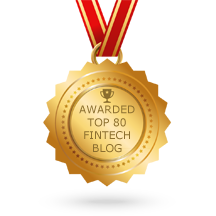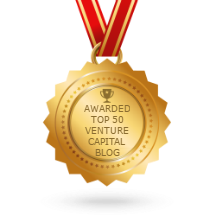|
Automation and digitization should increase the productivity of work. But productivity growth has been flat or declining in most developed countries during the past 20 years. This has been visible in countries where most jobs, and especially new jobs, are not in manufacturing, but in services and information work. So, it would be fair to assume that technology and digitization don’t help improve productivity. Henry Ford, Jeff Bezos and Larry Page didn’t win big because they optimized old operations; it’s because they created totally new operating models. Opportunity lies in developing new ways to do things, not optimizing old ones.
World-famous economists, like Daron Acemoglu, Greg Mankiw and advisors of many governments, try to understand reasons for slower productivity growth. I won’t attempt to understand all the macro-economic factors, but to focus on small practical questions like what could be the bottlenecks with digitization and automation of information work. I wrote earlier about how we need real digitalization, not consulting projects. The problem of many automation and digitization projects is that they just try to optimize the existing processes and implement them in legacy IT systems. Both those processes and systems were developed before the current opportunities of digital services were readily available. The optimal model would be to build new processes with the latest technology focusing on the company’s real value to its customers. If you automate old processes that are unnecessary to offer customers value, it doesn’t improve productivity. That’s why genuinely digital companies like Amazon, Facebook, Google, Netflix, Alibaba and many startups win business from old companies. It takes quite a lot of courage from management and investors to disrupt old models instead of just trying to ‘optimize’ them. The reality is that to fine-tune old models with old IT could give you a small percentage improvement in productivity, but if you want to achieve much more, maybe 100 or 1,000 per cent gain, you must create new models to operate with the latest technology. I also wrote earlier about the trending low-code and citizen-development, and how it can rarely help implement robust well-planned solutions. This is another example, why automation of processes doesn’t always bring significant value when citizen-development is trending in automation. Suppose a company must create new models to operate so that customers can communicate digitally with it, and they digitize all internal and supplier interactions. In that case, it doesn’t work if each employee (i.e. citizen-developer) starts to automate their routines from the pre-digital era. It’s a sad fact that real automation also makes some work unnecessary. If you just let employees automate something they don’t like, it doesn’t make a company significantly more effective. Of course, by getting rid of boring routines, each individual and department can become more effective. But in reality, significant changes need much more fundamental changes. A record shop doesn’t become a new Spotify simply because employees automate some of their routine work. And a bricks-and-mortar retailer doesn’t become a new Amazon when employees automates their routines. Those companies need a new way to operate with new processes and new roles for their employees. Uncovering existing processes and automating them might bring some savings, but if you create new ways to operate based on new tools, you can create a whole new business. AI, digitization and automation (including RPA, robotic process automation) are at the heart of these changes. They are hype terms nowadays, and it is easy to make fun of them. Their reputations suffer if those technologies are not appropriately utilized; they become window-dressing, like lipstick on a pig. Suppose you put a little bit of AI and a little bit of automation on top of your old processes and systems. In that case, it is not making them more digital or intelligent, and it’s just adding one more layer of complexity and arguably, technical problems. Some companies would like to use machines to observe people and use AI to create automation to perform the same tasks. It sounds like an exciting tech vision, but it’s a strange idea that the optimal model for machines would be to copy how people have done something traditionally. Henry Ford didn’t build a car for everyone by asking old-style workshop car builders to automate some of their routines. Jeff Bezos didn’t digitalize retail by asking guys who receive telephone orders and fill paper order forms to use VoIP calls and scan order papers. Google founders didn’t revolutionize the online ad business by making an online copy of the yellow pages. They created new models from scratch, how they could offer the best value to their customers with the latest technology. But many companies still try to develop their operations by adding new tricks to old models. Automation, AI, and digitization will change most businesses, and they will significantly change the way information works. Improving existing processes is a multibillion-dollar opportunity, but creating new, more effective models to operate in hundreds of billions or trillions. Improvements bring short term wins; new operating and business models create companies that prevail in the future. All these require courage from management and investors. They must be brave enough to discard old models to operate and old systems. It is nice to promise each employee that nothing will change or promise two per cent stable growth to investors. Still, as we have seen in retail, this model leads to huge collapses, significantly when competitors change the business and market rules. Those leaders who want to create big successes should start to build their operations based on software robots, AI and digital processes, not just hope the old models can be done a little bit better. And they should start today. The article was first published on Disruptive Asia. A personal trainer gives you instructions on what to do at the gym. In most cases, she or he asks only basic things from you, like your target, to either lose weight or grow muscles, and maybe how often you have visited the gym before. A growing group of wellbeing consultants tell you, how to sleep, eat and work better. They might ask you to keep a sleep and food diary. These days, people have more and more wearable devices to measure daily activities, heartbeat, sleep, blood glucose and many other things. But there is still a very weak link between data, wellbeing and training services. However, this will change.
I have read about sleep consultants whose primary task is to teach people to repeat some words when they try to sleep. They say it helps you to relax and sleep better. However, people nowadays have several devices that measure their sleep, heart rate when they go to sleep, sleep intervals, even body temperature and how tough their day has been. Wouldn’t it be better if those sleep consultants could utilize your data, and not only teach mantras? During the COVID lockdown, many fitness centers were closed. They started to offer online services, including virtual personal trainer sessions, online exercise classes and videos on how to train at home. But this is mainly one-way communication. The fitness center doesn’t take your data to create a more personalized plan for you. Why not? Technically it would be quite feasible, but they would have to develop new services for this model. Many customers would be ready to pay more for personal services than standard classes. The world is full of services to lose weight. People pay for online services to get instructions for daily eating and exercising. Some services help track your calories when you record your daily food entries. Most services are still elementary and don’t use data available from wearable devices. Nowadays, you can even track blood glucose in real-time. It would be quite useful with exercise, heart rate and sleep data for personal weight control services. The wearable market is increasing. The smartwatch market, in particular, is growing steadily, approximately 20% annually based on market research and is expected to reach almost $100 billion by 2027 from $150 billion this year. Smartwatches take market share from some other early devices that only measured steps and heart rate data, basic things. At the same time, new categories are growing, like smart rings (e.g. Oura) and blood glucose, metabolic health apps (e.g. Levels and Veri). Withingswas part of Nokia for some years, but Nokia sold it back to its founders and wrote it off, just when the market started to grow. It is a company that has a more extensive range of products from watches to digital blood pressure and under-mattress sleep tracking equipment. So, people are starting to gather a lot of personal data. But many people are still confused, how to utilize this data. Apple Health is a service that helps combine data from several devices if you have an iPhone. But it is probably the most confusing and worst UX product Apple has. As with business data, people need tools to utilize the data, and raw data is hard to understand. There are also other health data sources. DNA tests offer information on personal genetic profiles. Digital health care records are starting to become available in some countries. This data could also be combined with wearable data. This sounds like a perfect match. Wellbeing services should start to become more personal and based on real data, not only some standard instructions, because people are, in fact, individuals and different. Wearable devices provide more and more data points that are hard to interpret. Both those parties could improve their businesses if they learned to utilize the other party’s services better. How can this happen in practice? There are, at least, three ways to do this:
Any professional business consultant usually analyzes a company’s numbers and processes before starting to give instructions. It would be bizarre to have a consultant that would try to get a company to better health, without looking at its existing data. But in wellbeing consulting it is still very typical. This will change in the next few years, and we’ll see wellbeing services based on actual personal data. And this market will grow fast; people are ready to pay for better overall health and wellness. The article first appeared on Disruptive Asia. |
AboutEst. 2009 Grow VC Group is building truly global digital businesses. The focus is especially on digitization, data and fintech services. We have very hands-on approach to build businesses and we always want to make them global, scale-up and have the real entrepreneurial spirit. Download
Research Report 1/2018: Distributed Technologies - Changing Finance and the Internet Research Report 1/2017: Machines, Asia And Fintech: Rise of Globalization and Protectionism as a Consequence Fintech Hybrid Finance Whitepaper Fintech And Digital Finance Insight & Vision Whitepaper Learn More About Our Companies: Archives
January 2023
Categories |






 RSS Feed
RSS Feed
